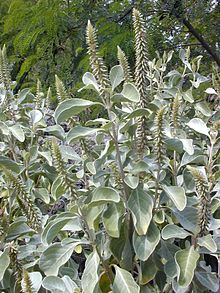
Alternanthera is a genus of flowering plants in the family Amaranthaceae. It is a widespread genus with most species occurring in the tropical Americas, and others in Asia, Africa, and Australia. Plants of the genus may be known generally as joyweeds, or Joseph's coat. Several species are notorious noxious weeds.

The Chenopodioideae are a subfamily of the flowering plant family Amaranthaceae in the APG III system, which is largely based on molecular phylogeny, but were included – together with other subfamilies – in the family Chenopodiaceae, or goosefoot family, in the Cronquist system.

The Gomphrenoideae are a subfamily of the Amaranthaceae.

Chenopodium is a genus of numerous species of perennial or annual herbaceous flowering plants known as the goosefoot, which occur almost anywhere in the world. It is placed in the family Amaranthaceae in the APG II system; older classification systems, notably the widely used Cronquist system, separate it and its relatives as Chenopodiaceae, but this leaves the rest of the Amaranthaceae polyphyletic. However, among the Amaranthaceae, the genus Chenopodium is the namesake member of the subfamily Chenopodioideae.

Gomphrena is a genus of plants in the family Amaranthaceae. They are known as the globe amaranths.

Cleome is a genus of flowering plants in the family Cleomaceae, commonly known as spider flowers, spider plants, spider weeds, or bee plants. Previously, it had been placed in the family Capparaceae, until DNA studies found the Cleomaceae genera to be more closely related to the Brassicaceae than the Capparaceae. Cleome and clammyweed can sometimes be confused.

Pergularia is a genus of the botanical family Apocynaceae. Pergularia daemia is a perennial twinning herb that grows along the roadsides of India and tropical and subtropical regions in South Asia, Africa, and Australia.
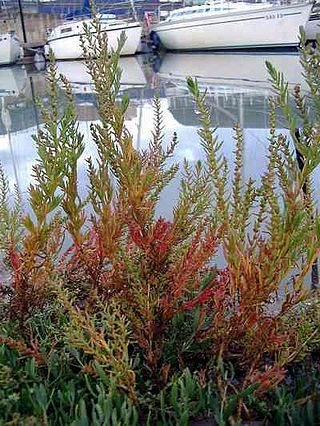
Suaeda is a genus of plants also known as seepweeds and sea-blites. Most species are confined to saline or alkaline soil habitats, such as coastal salt-flats and tidal wetlands. Many species have thick, succulent leaves, a characteristic seen in various plant genera that thrive in salty habitats.

Melhania is a genus of small shrubs or herbaceous plants. Traditionally included in the family Sterculiaceae, it is included in the expanded Malvaceae in the APG and most subsequent systematics. The genus is named for Mount Melhan in Yemen.

Aerva is a genus of plants in the family Amaranthaceae. Its species are native to the palaeotropics, throughout continental Africa, Madagascar and smaller islands, through parts of the Middle East, India, and southeast Asia. Aerva javanica is an alien in northern Australia.
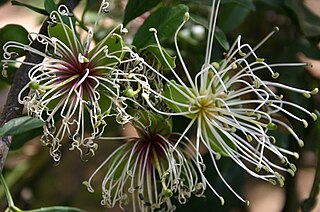
Maerua is a genus of flowering plants in the family Capparaceae. It includes 70 species of shrubs and small trees with its centre of diversity in Africa, though some species extend their range as far north as the Levant, and as far east as the Indian subcontinent and mainland Southeast Asia.

Salsola is a genus of the subfamily Salsoloideae in the family Amaranthaceae. The genus sensu stricto is distributed in central and southwestern Asia, North Africa, and the Mediterranean. A common name of various members of this genus and related genera is saltwort, for their salt tolerance. The genus name Salsola is from the Latin salsus, meaning "salty".
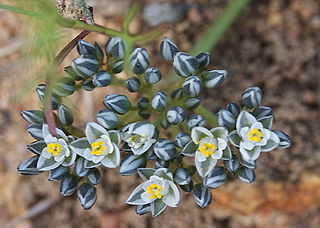
Limeum is a genus of flowering plants. It includes 25 species.
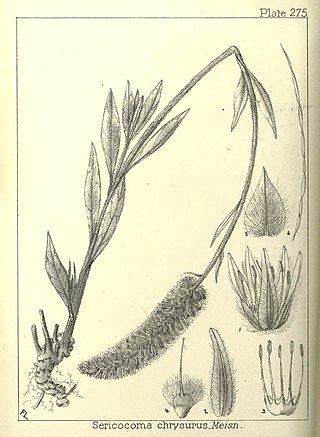
Kyphocarpa is a genus of flowering plants belonging to the family Amaranthaceae. It is in the Amaranthoideae subfamily.

Pandiaka is a genus of flowering plants belonging to the family Amaranthaceae.




